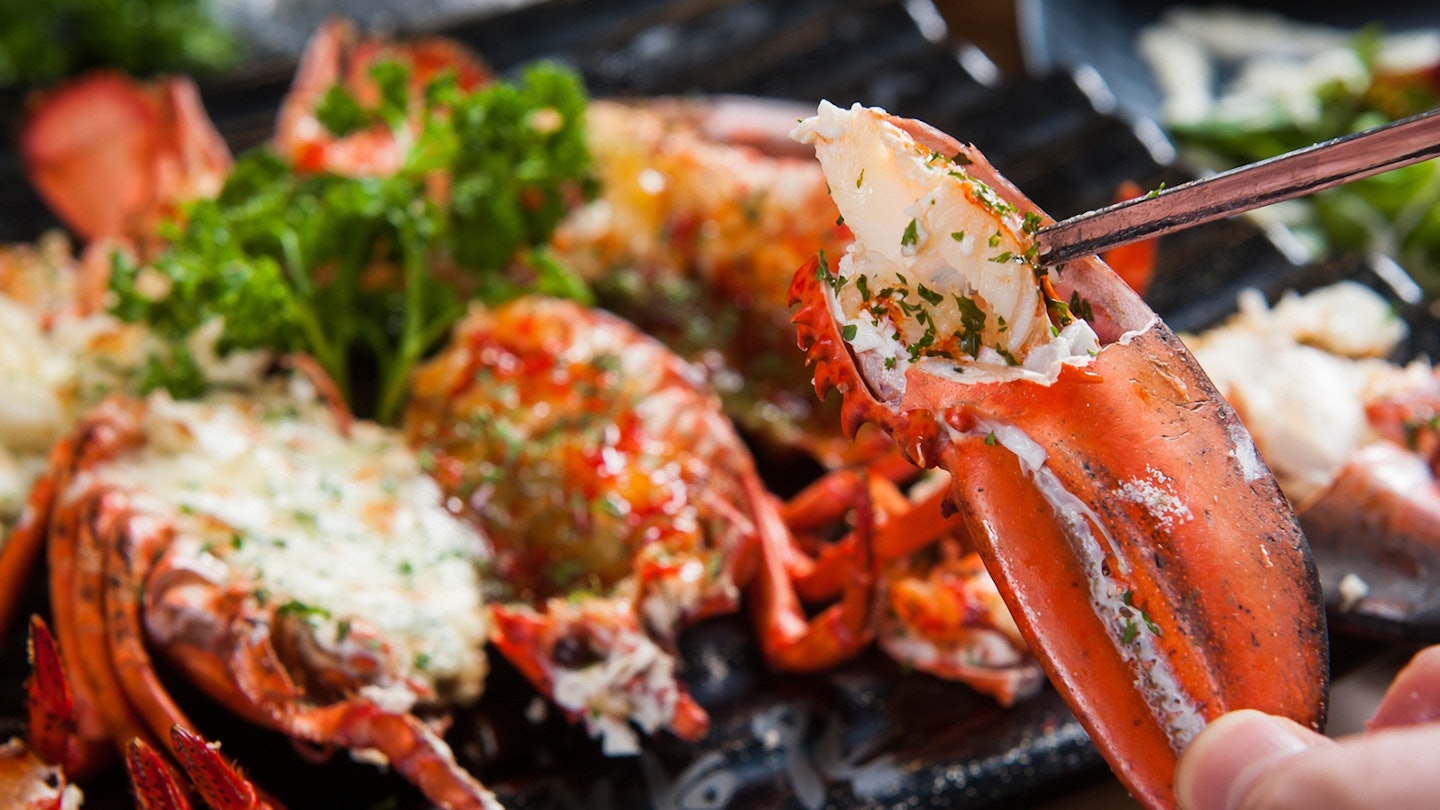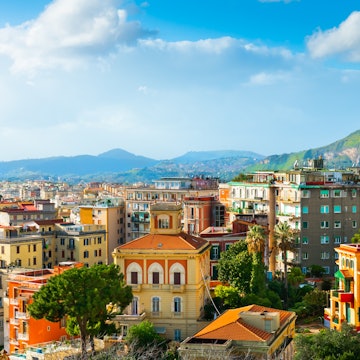
Food touring: behind the scenes in the world’s tastiest destinations
Apr 11, 2018 • 6 min read

Food is a fundamental element in the travel experience – eating a local dish can evoke ancient traditions stirred into age-old recipes or bring to light new cultural movements whipped into modern fusion cuisine. Today, many of the world’s most food-obsessed countries are making their culinary culture all the more accessible through hands-on time with local cooks, open tasting rooms and behind-the-scenes tours.
From crafting chocolate in the Caribbean to hauling fresh lobster in Canada’s Maritimes and learning to cook Bolognese like an Italian nonna, here's our selection of some of the most mouthwatering food-touring experiences from around the world.

Nova Scotia, Canada
Lobster, a junk food? Believe it or not, that was the status of this North Atlantic delicacy in Nova Scotia in the late 1800s, when storms would wash ashore hundreds of lobsters in the Bay of Fundy. So abundant were they that gaol-keepers would feed them to prisoners, paupers would harvest them for a free meal, and farmers would plough them under the soil as fertiliser.
Today, clapboard villages barricaded by lobster traps are still bankrolled by fishermen and the king of shellfish goes for a bargain C$6 or C$7 a pound. Lobster eggs benedict, lobster rolls, lobster poutine, or simply steamed and served with drawn butter, are just a few ways the locals eat them in the region’s multitude of shacks, cafes and lobster pounds. Join Fundy Adventures and set sail with a local fisherman to catch your own crustacean, learn about sustainable fishing practices, and then cook it alfresco like a true hunter-gatherer.

Emilia-Romagna, Italy
Italy and food – OK, that’s a given. Yet one area in particular is revered above all others for its produce, and that’s Emilia-Romagna. Its passionate provincial towns are the cradle of unctuous ragu (Bolognese), salty Parmesan cheese, gossamer Parma ham and rich Modena balsamic vinegar – the best in the world.
Learn the secrets of traditional ragu-making in its heartland, Bologna, at the La Vecchia Scuola Bolognese cooking school; visit the Acetaia Di Giorgio factory in Modena to see the oak-barrel ageing of balsamic vinegar; and time your visit with the Festival del Prosciutto di Parma in September for a riot of ham tastings and open factories.

St Lucia, Caribbean
St Lucia lies within the chocolate belt – a fecund band between 20 degrees north and south of the equator, the only place in the world where cacao trees will grow (some even sprouting wild beside the road). Stop at any food stall in the early morning and you’ll see locals waiting for their breakfast fix: a steaming cup of spiced cocoa tea, made on the spot by boiling grated cocoa with cinnamon, nutmeg, water and milk.
For an insight into chocolate production, head to boutique hotel Boucan and its 250-year-old Rabot estate. Owned by UK retailer Hotel Chocolat and developed as a sustainable cocoa farm, the estate runs a ‘Tree-to-Bar Experience’ giving you behind-the-scenes access to the production stages – seed cultivation, fermentation, sun-drying, grinding – in between harvesting your cacao pods and chomping on your chocolate bar.

Macedonia
Fascinating, micro food-producing communities exist all over this Balkan state, where home-cooking, home-growing and local foraging are simply part of village life. Mountain herbs, paprika, porcini mushrooms, walnuts and fruit rakija are stockpiled in markets; and local cheese is central to meals thanks to celebrated traditional cheese-makers that produce salty, raw-milk sheep’s cheeses in the Mavrovo National Park. Unsurprisingly, restaurant menus are effortlessly locavore and farm-to-table.
The elevated old-stone village of Dihovo at the base of Pelister National Park makes a bucolic base for tasting the regional cuisine. Here, local man Petar has helped pioneer community tourism, reimagining his family home into a pay-what-you-think guesthouse starring home cooking and food, wine and beer tastings. Visit the village’s apiary, kitted out in protective gear, for tales of bear sightings and tastings of woodland honey with the resident beekeeper.

Fez, Morocco
The fertile plains sweeping beneath the Middle Atlas Mountains have acted as Morocco’s breadbasket for centuries, serving the country’s greatest Imperial City with fresh produce and cultivating a food scene fit for kings. Local Fassi cuisine is the talk of Morocco and Fez’ beguiling medina arteries are a wonderful place to learn about its traditions.
Dive nose-deep into the bustle of Fes el-Bali’s archaic street stalls for prickly pears, spicy snail broth and b’ssara (creamy fava bean soup). A more meditative option is a Moroccan bread-making course at the Ruined Garden open-air restaurant. The experience includes a trip to the local ferrane (community oven), a sweltering open fire pit manned by a sooty baker, a tradition that harks back to a time when few families could afford their own oven.

Tasmania, Australia
The apple isle, once an ends-of-the-earth convict settlement groomed for its pure pastures, has by default long been a bastion of simple living. So it’s little wonder that in recent years Tasmania has become one of the world’s brightest destinations for farm-to-table eating and drinking. The Agrarian Kitchen, a sustainable farm and cooking school in the peaceful Derwent Valley, is a good place to embrace the philosophy; classes get cooks out into the fields to gather what they plan to put on the plate.
Supporting the cooking scene is a wealth of independent rural food and booze businesses that welcome visitors for tastings and tours. Try Grandvewe, just south of Hobart, an award-winning cheesery with daily sheep-milking demonstrations, cheese-making workshops and tastings, as well as an adjoining distillery that transforms sheep’s whey into boutique bottles of vodka and gin.

Bali, Indonesia
Making a stand between sticky jungle and rainforest-flushed paddy fields, small and sustainable farms have helped spur a food revolution in Bali by making quality organic goods available to a new breed of chefs. In the culture capital Ubud, healthy, raw and vegan menus have become the yang to the yin of classics such as nasi goreng (fried rice) and babi guling (traditional suckling pig).
An abundance of fresh fruit and veg, coupled with clean-living Hindu principles, has helped the raw-food scene flourish in particular. Cafes like Seeds of Life and Sayuri Healing Food embody this ethos, with the latter also offering expert raw food ‘cooking’ classes. Continue the cleanse at Clear or Alchemy in Ubud, two restaurants that turn healthy eating into an art form with their colourful and creative plates.

Jordan
Though it sits within a troubled neighbourhood, Jordan is an accessible, safe place to taste and try your hand at making Middle Eastern cuisine. ‘The way to the heart is through the stomach’ is just as much an Arabian saying as a Western one, according to Sherin of Beit Sitti cooking school in Amman – a matriarchal family business that employs local women to give them an independent income. Flip pittas and char aubergines with these ladies and you’ll get a special insight into how entrenched food culture is in local Jordanian life.
Visit the capital’s hole-in-the-wall sweet shops (a legacy of Ottoman rule); harvest tomatoes with a Ghor al Mazra’a community near the Dead Sea to make the traditional dish galayet bandora through the Zikra Initiative; and join Bedouin chefs at Feynan Ecolodge on the cusp of the Dana Biosphere Reserve to learn how to fry perfect falafel.













